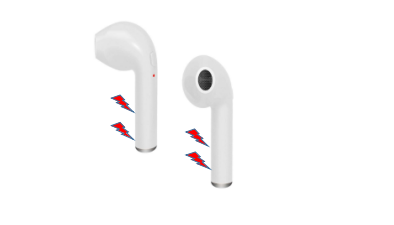
Privacy statement: Your privacy is very important to Us. Our company promises not to disclose your personal information to any external company with out your explicit permission.
Here's a test of headphones (Wireless Headset, TWS Bluetooth Earbuds, Mini Bluetooth Headset, Bluetooth Headphone, Earbud Bluetooth, Ear Buds): ±4KV ESD test for Bluetooth headsets.
Each earphone is not just for sale, but through repeated experiments by the earphone manufacturers. Confirm there is no problem, will be taken online to sell. Here's a look at before and after headphones rectification.
First, the description before the rectification:
Two separate Bluetooth headsets, wirelessly connected between the two headsets, and then the left ear is connected to the playback device via Bluetooth. When performing the ESD test of ±4KV, it is found that the Bluetooth headset will restart, or the Bluetooth status cannot be connected. This is not in accordance with the standard Class B of IEC61000-4-2. The following figure is the test point:

Second, the rectification process:
The red icon in the above figure is the electrostatic test point, because this is two bare metal dots, one of which is GND and one is 5V. After repeated testing, this product will appeal when it is ±3KV. Disassemble the product and observe its internal structure. It is found that the antennas below the two test points are Bluetooth antennas. The antenna and the PCB board are connected by electric shock. Therefore, first we take the antenna out. When testing, we found that the product has improved. Hit to 3.5KV or so). Confirm that the antenna has some interference to the ESD. We connect an ASIM ESD in parallel with the ground on the antenna (model: ESD5D003TA, the junction capacitance of this ESD is 0.3pF, which has no effect on the performance of the antenna). When testing, it is found that the product can accept 3.5KV static test; but still unstable at 4KV.
Then the ESD test point is processed. The ASIM ESD (model: ESD5D150TA) is connected in parallel to the ground at 5V and a magnetic bead is placed on the 5V, and a large capacitor is connected in parallel to the ground. When testing, it was found that the product can accept ±4KV ESD test, which is in line with IEC61000-4-2 Class B standard. It has been confirmed that the product has received ±5KV ESD test.
Third, summary:
The cause of ESD interference is not only related to the PCB board, but also has a great relationship with the structure of the product. When performing ESD rectification, it is first to find out which module the product is interfered with. The right medicine is a shortcut for ESD rectification.
May 27, 2024
October 15, 2021
October 14, 2021
Письмо этому поставщику
May 27, 2024
October 15, 2021
October 14, 2021

Privacy statement: Your privacy is very important to Us. Our company promises not to disclose your personal information to any external company with out your explicit permission.

Fill in more information so that we can get in touch with you faster
Privacy statement: Your privacy is very important to Us. Our company promises not to disclose your personal information to any external company with out your explicit permission.